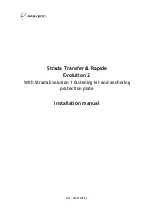
83
True exposure
True exposure
The effective shutter speed for a central lens shutter is defined as
the length of time between the opening and closing when measured
at the half height position when expressed in diagram form (see
diagram). The fact that it will take some time to open and close
the shutter will have an influence on the effective shutter speed as
the lens aperture closes to its setting. The faster the shutter opens
and closes, the less this influence will be. It is also follows that the
influence will be greater on shorter shutter speeds.
With the lens at full aperture (largest opening), the amount of
light at the film plane appears as illustrated by the blue curve in
the diagram. The effective shutter speed then becomes T1. If the
lens is now closed down by one stop, the amount of light appears
as illustrated by the red dashed curve. The effective shutter speed
is now increased to T2, which is longer that T1. The result is that
the exposure is not reduced by exactly one stop (1EV), however,
but slightly less. At the shorter shutter speeds, the exposure error
can be as much as 0,5 – 0,8 EV.
The True exposure mode can compensate for this exposure error
since the behaviour of the shutter is a known and predictable factor.
At shutter speeds of 1/150 second or shorter (faster), the camera
will shorten the shutter speed to compensate, as illustrated by
the green dashed curve. At the fastest shutter speeds, however, it
is not possible to adjust the shutter speed and so the aperture is
adjusted instead.
Although it is probably an infrequently used combination, please
note nevertheless that the fastest shutter speed / minimum aperture
combination cannot be adjusted by True exposure.
T1
T3 = T1
T2
Shutter position
Time
Open
Closed
Exposure at max aperture (e.g. f/2,8)
Exposure at aperture f/4
Exposure at aperture f/4 adjusted with true exposure








































